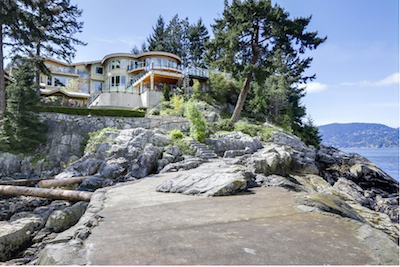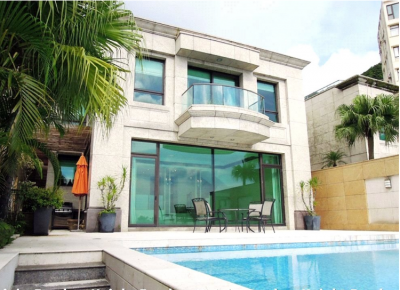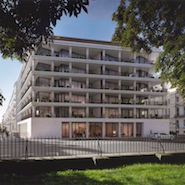Global prime residential real estate continued its steady climb in the first quarter of 2016, according to a new report by Knight Frank.
The index increased 3.6 percent, within the 3-4 percent window observed every quarter since late 2014. However, this is a result of a handful of booming markets rather than stable growth across the board, meaning the 3.6 percent number obscures the fall of some markets.
"In Hong Kong a raft of cooling measures aimed at improving affordability for local residents and deterring speculative investment have been introduced in recent years," said Kate Everett-Allen, Partner, Residential Research, Knight Frank.
"A lack of supply, combined with strong domestic and foreign demand, has driven prices higher [in Vancouver and Australasia] in the last two years," she said. "Both markets have seen the introduction of ‘cooling measures.’ Arguably this is having a greater impact on rates of growth in Australia than in Vancouver."
For “Prime Global Cities Index Q1 2016,” prime residential real estate is defined as being within the top 5 percent of the wider market.
Growth gap
Vancouver, British Columbia, Canada continues to lead the way, with 26.3 percent in the 12 months ending March 2016. It is the fourth consecutive quarter it has had the largest 12-month growth, and it has the largest six-month percentage change and second largest three-month change as well.

House for sale at 6935 Isleview Road, Whytecliff, West Vancouver
Inventory remains in very low supply in the city. As a result, February’s increase from a 2 to 3 percent land transfer tax on purchases over $2 million Canadian, or about $1.55 million USD does not appear to be hurting the market.
Behind Vancouver is Shanghai, at 20.3 percent on the year and an index-leading 9.3 percent increase from December 2015 to March 2016. While Mainland China did well, with Beijing and Guangzhou also trending upward, Taipei and Hong Kong are at the bottom of the list.
Taipei has fallen 7.6 percent over the yearlong period, with Hong Kong dropping 6.4 percent. Only Moscow has had worse changes over the six- and three-month periods. However, for the third consecutive quarter, no city is coded as having a significant decrease.

Knight Frank Hong Kong real estate listing
Thanks to Sydney and Melbourne’s growth of 12.3 and 12.1 percent, respectively, Australasia is the strongest performing world region, helping to buoy the global index to 3.6 percent growth. This is in spite of a new fee for foreign buyers.
However, despite the positive number, many major luxury hubs, including Monaco, Miami, New York, London and Paris, are trending down, and the gap between the top four cities and the rest has widened. London in particular has fallen to 23rd with growth of only 0.8 percent, the slowest price increase since 2009.
Trending down
While the global market has its share of pluses and minuses, the U.S. as a whole has entered a slump.
Prices in the U.S. luxury housing market fell 1.1 percent in the first quarter of 2016 over the preceding year, according to a new report from Redfin.
Aside from a positive blip in 2015’s fourth quarter, the U.S. market has been slowing since the third quarter of 2014, so the drop is not terribly surprising. With prices falling, buyers are taking advantage, and several cities are proving themselves as viable luxury hubs for the future (see story).
The stable overall market has covered up decline in some major cities.
London real estate growth has fallen more than half a percentage point over the past six months for the biggest decline since June 2009, according to another report by Knight Frank.
Prices fell by 0.1 percent in February compared to the previous month, and growth was slowest in neighborhoods with more expensive property, such as Westminster and the Royal Borough of Kensington and Chelsea. Like everywhere else, market volatility has potential buyers on edge, and the impending European Union referendum further complicates the market (see story).
"Overall, the index has recorded steady annual growth of 3-4 percent since 2014 but this hides the slowdown seen in some markets," said "In London, for example prime prices are rising at their slowest rate since 2009."
{"ct":"HBLtoVEhYSsWV8IUOsykp4I00FjyU4a0hgC14+eY9DiAioVkwvd4ZTN5N18nlTMYwiq2Azotwm7Jbh4umJY5YkupwrM13XeL6gsg4mg1phVq8eW1HCeco8hE3D6fqNzC3NhjfY\/dw5MvAB5lxWKBmRq26O3s+keJ94EGOnfSjTYvEOC1\/5IsMxjOHl0hIpv16kyCC6CYos\/yvejtsHmN+ELLu1AvgDPKjIrPk2jaBxXQRXsYx2NgFTD6o6e1EdT+GL+lxBf1eJWxWunMKMhjFS\/yCK53CZR5TrGswKoKaa+bHDOFPo3FTRGAzmVGZuuuomGRV0GR+ZrKP6QQpsV\/T864rz1j\/x46mGbjQgyt16FVHKoxGMLJAUaOiy75kqPlSqeUJEYEyVRm+mnStnqogmUaTTeqGd+9NlYORWp8MVpk\/7viDLu6rl4Jdll8xfzksGIDFcvifPznr5Rl+fo7D0Lp8nc\/yRSvF29Axa+eSnvWXHR2GyWOxRwKShX8IJ3I11u\/OjsEARra4eI\/7\/jDN2XndSCKZHUHXDug2WhchK\/7tZ7patrvnEJX1VsTOrB26khS3wwW2iqBJdUtli2T2st3CW\/72uXwu4Eu37zN7DQBPl5xk7OWY4IQSFX0vpxGQlpJ98Lk9nI5+gma1Y8WqcJ50gJFGhXvN+6XXgA2YyKmuqPwZOrYpFuFYg18XLDM7L\/pcuc8TPfMAmBSw8TXx3Qbt8wUqYgVV9k79sUhrYOicRJp3r0aBsMFjIspKtBxBomUT4rml\/hJPYkDsPyGoZMjHVFdiOm0xWMUIzZ85cd6tOc5TLBT2OUrUu5c2Hjd0eAkMfw1SkQKfLjqs8FDPBBmKRecJsWFfMRuyBca09rowrAL24qi4jqddRbwzwNOFA1pL2Yf9poYIsjY0Zew4AgJzz1mH08wSv7LYiRSvk+5k7VBABOuTu1zQ+G80Fyj\/J7HBMKGGuhd8aQqmhqmd0RFQSYXVJegwUGpLAO7N02tu3UlIOYFQOddVjXSX8pvs76rSxBw7Li9Jf1FZqdG1hIU4JiyFYwL06AKeaCPy+7d8fUAnxX3fOwuEx2F5haYyyIc4LHk94OT1+XLOnvRBpn8qs6JNLuegIr11zAY+MLQcKPwRhZbaI168vhkP5wz2ylHaCcmlOWGKjs0MucIhXupN8q\/fHyp+zLbdvNxuPvHN+IvsBCRznQTLKUZGFwl88yChP\/+J8TWbqum9wmTfVz9E+Z9fR1NoLNalkjwctNEXcUU9fclcPjZYQfBSBeRaNY2Zp0o1IlWcgnQcq2UWpMSPhOMmppnHnCzuYK6hsd9P9PDXVZUtFwYNWcpU4vdTCLK33DzW+o9Seyoz8YncpSngoV6v7gj0yteZUrH8l4UpwGmtAgns0Uu5JUAu1DIq4w+H7hpUqht7bvjKbm05fqb2NGlbBgTh1GKWxcD77TAhwcx4WgZRcDbLRwhbaP1Ay1Z5jxXpP+VYpTQFLdZH6bWZ+3XFPTliZpu2+BXREqx3hz0jEMFHhM+3fjafgBxLHiYp5ajNp6NZMop5jWFJj6eChmTcPCmrBJk95jMOnXEgSPY71bRTpFVZglmeuE\/Bc9myaVfsCvMWOXrEpWFDgTqJ0b3\/oStKdzNS5iI5Zz3vxkqdvHD3zMlsWP8EfdQ6OuWwDXZsXGoUG4R775UOY7ThorwPHFo++JkEVY8ewebAIAKyaH4e03cZs2xxB3mnNJZFhWn9BPKyw2IzX2ukJrBf5nlCSywbDiof0oJkeWaCoJTM8NJIa0I0mBAyDeqHxzHbdoiZZWu2r2mUxbo1vJs33JopPPh9Zpd8igGa16dm7b1\/OHw7wIHbn7chssvmtz4NJcQFZ13wgbSwQ7kiR2Nq4lieUxancpFfkZld35+vuwU41WPXEsBFMnuWLdq9siqomQDN1XSUAVoCXW4k3A8Yde1TdhDhBAhADpdKsLJOxLv1fQFtONO3279ohBkj3q\/xf1tYU0PEweZ45ct4GBb8S6a\/utSGD+Y381cvZJFyYkFBGbUFuX43\/NEiZYfaeKcD3YBWYAHIpCTlp8pICUAUhJzMUTlMx2sIAHcNIP36m\/509hIyGGSFKiCmJ5uVo57d5iNAvPOOv+q6TJnriNs7hmwLRTZBLGmKQBtV4GVv9ej4GRTjNOaY+EeWTEZ8UhYh3n4idZ3FWQ4B1RJWH6dgDmp03SkSGlpBAtRTvvF20y1akajKVdxPnnmu7lMyQK6ZjK0BUyZvIFfvA\/TyboRW0lS\/gTUDYX\/YN1z1nc0vdUKVWGn0O4ZpLsuLd8WXgKDXJBjVMXJwafEmWygXAA+BcqtTkvsYuPmoEsv61dmC\/4g+Ngp1e\/h2Xe+hHIm3kLoqh7ZkhQnto5Y4GKIhnjDAlenqJSkx\/qF03qXxzpPQ7HuDz3uih+3e9TIJ39WhLJSZOhd9uSSlDszi4y8SY1+pPo2Z+vOigSu43pT4ZBfG0dIHO8kcgxRPVVgkQ\/TyuyP5+bGjIdXC3uDPt0BaQFSzoKhPwSg2oAgDBkaHlcfgl0vGLcRRmgmGCkQ9Mcfy\/C6OwR8aCfZL5+bpL9Rg6Yirl0yiMgwU39Np1kYNVwfYYaElXJ6S2n2ZK1oZJtKyaJp8sbCZIxdP8tyoj4salsvThzLcwDKmCIrNFPG2a\/vzWPfzZqPLg\/2i6A6sRz6\/g9Rp+0JdoHVi6JOBGRLEpTCTePAAhqgnHgQpTg5pSQs0JqhNrBAuK3Z9yU8Kyo+d7A+VvaUum3GTMrGI\/GPRchgzOVHsHcE+g8EHZZPkwjhGU+eGGb+ui7CKI8LNl\/67sAC\/RKzQE\/D3XyDYs8BLr4BmX8TyGNruSPLx6fwerrWw\/1RHDS0ewxX4wt4ECSoYVytfoOaT+X1EzlGBfZk6PTrQeENsolWh0vYGtYmV5Oub+AGDLsLDYFUykgXX2LS8yzKk4YIYQBVzWNqIKpInujHt3sammHl6BT82polTSOSHv7tKoSnUWzqm\/0STsltDSJl36yZRud5icOqZBC\/KdNX\/2uFframlBIkaF1K2gnoh6+YCXQ9GdrahI2QpnMjD16MejTbh+yUsxVe7nRT2kV5tafi6IDH\/0eNEh3FO9juIL5hf0rbwFYw5BxRHZa6lpyzEiv1C3GoZH28K3VMqNMmTSl0h5+2+dnBZHyiT\/DBRrOkL6Xhkx4H9zt0ON0FCMUnUblxDCnHnT\/2tt6spLktos7qnCKZkvje5Mzr8Mruv7f66+12NMikTeCCaZ1Z43ODLVjSbFEL\/uQOtQ90FyUXaaUGOkJSsAJ6zWznrIjVoRlrxLqAJXw9Isrd2UlsQhtXTdtaI\/3FnOfMtFLMZyrdJP51cd8UOitcFS9FtEbOo17jwLK1dkaCtcS6E6MyUJfgzozAZrWpnjBSiJ+sJh15PlPxD9TVKlSFhIlClTk4u3XZLIIwJK5hkjOElQ4uCmo8XoPS9BDImwx+L7in3gBC36B+w7i2lYAMUkk4nOGeiulDiOMADxw5u4S1Q7C2EdjrzMyjOSbR3FytuvfhMwTkdsgwDt8a5\/5AOGkc0nCaKpmbnOzIqRkdcrfjVcGtiCWUzaVYQePe\/CJ36wFN56N+LWbIU2NXMY3r\/4OciQeBogqRVBbnO\/5bHJvmQ5s70UsrWwy8zR7Qa7f2Hciqv\/JhZN1wpj5nbBoJpSN+f9D1iHIiF77jljkJti2YT3BFuVBBr0xNww\/5WuPMDkgW2r3td6ZlKzSiOheTt5Ve\/047Yqf\/g2BgCgSujcjSTThu0flaocOiWTSI2LrwIcBUxcNvhU1gXeE7fsTk9oKLYjRZJHXmm7EZ2lNej2ut+uNS64hRm6jUeNKC475tPmzC5oALZ59GKmKqe4ZfDP1xWVYeB\/GMBs6TdOM5gkI3FnAy2+qQ5QiO6tAA3C8ifxL+VwWhcESPaue4ApvjMbZpDfNfbj0xiLM2QCAwob3DVnL3qwbEaF4DIjUUtCFZPKuyD3JeFHAO7L\/IxYxyjv+rwm8c+fqITQsopwkmYcFwT6z45Sg1XU5f80koxFhy+UkMgZ40MMoj+bmog34Ym1GhjX4llRzyp10uq8LcqpGgd7iVmLwIGNYXffBdT9h0mRoD7cGxKUWP8EXD4uFilMqAo032W0tI2iXFRZ5hPvWcTUk1nIMsTbBMFM3RnM\/6NXa5OJfLHpbcsNnDJKXBxKNZtpQUj3bfpF31B8y9kqfZZ\/vjDpViYSijV7momDWSZ9MsXFrwGs\/xdmRzsm\/sR2dia4nGZxiEiHXaP0zB+SKtXf7j+UPDUxD4cbLQ4ur3DWHycDFGVewuW3rt+YvGZ6e\/rsR+ooXEZh567MYXQrSqfmLMBNkJd+JwUs9lkMejnlaPCmaAfBrSU8vRQ976dafJ\/RA9ScNlH\/kg6svJped4dTQWgeMs3BU8zvfUvQzx18z\/YHnPcKhGeaA+bXjkFnD4T4BSiPABVqBYi+QQaLzvlfxpoR67Jd6Dr1BZCMmPzJpm31Vmx5lzXxt\/8omu0EjnqKbvaNwv4so7xDy9TWl5Ot7C+fyJUayW+KLmWawsiGCmPc3zsxKF3DzY0D3QXtNY0lLPd+Qo6\/7BJ0Vk2mpENhS3I+y6Vrt5K\/uOXbHJ+vckNRsUCMBhrNK1OqmENQkY2gtvpEmkBLmMItjPeJlPx5B1qaasRB1vGkee4hP7car6N\/fkRjPOZNd\/T+OV6IwShOWduw5RNkjKiAUllJYBQaCJK\/e2ZolnHcxZqU4y\/U6xid2wcxK\/d4D6Wf\/3nM+AM390AagkWM49Ms76DV4\/JxIN+ObphNp2gQbMF3+oJtExGTupM9P3L50D+c\/TkHvHtrsDm1Hq\/0dZVB7NNcAYNHQR5DJOwWWvI5jAOXCbw1RQYYBdGqlLtYOnFhnm09H2GMlnekb6ea2NXG90Fy6jJcS214p7Q7iz0dYBR+PAmZE8QY2RjDsxRaZIwp2gd6GmlX5meIR\/kod8821sBW1IgQJpHWdvQO\/gx+CXaPw7WantBJQxTRhMeFh7FkT8YNybGDtl5xWG+ltSZGeJedvlY+sAQ\/NwpEGhEC64v+OolACaq8lSHrffMVxgQEsILSE5QHVFHKCbSnsdYuXW3h0FIqiWqsXVi\/9NppiUP7HJTQ8mtpjPBhapp7VyXHNFDVGL2l838CXr4VWhwWHjVxjQVx1m9SKyr8xfg\/zlYGffb++fGs9ITsvW1bL8iwsccN+UT0abSMRdMY4F3hgHFk+IFBvAR++OcTqzw+Gv6k7tqWr9rjN7DT1NqBvy4IamRG3jioQcgP\/1jRPuyKDZzP6kGH7b\/md\/ZCshzdKoupFq5upeTCbw4XF4H3dKbiy+e\/gX7qSP3VFWXQxuM0geFoe1YNmhDQ47iPmCbhW6u+mmczAovTs6PDTnCvx824FgpN\/ccuRfst6HSo9cA\/5m\/je4A9Xroe6\/GO4SFmj2LlxmR\/UBgJUNVtLdxI8C5UtZeLiY9hNYpwRQ5xLSopxr+LTtxUeRvYjQVGPbBxE0vpi3RZz41kyQrXiZ8gHL+6pW4YRCKLyTmLHrDd7rb4Ckz3xNAzlew3jhHh2J43LhXA1YWhmuS+WJka3CgJysX3IDpFgvVB5k+lIsg8adj14eGVG9rnsWGHHD0smASeqWuQzm9Os\/2v4628RIBwnKok+nk\/2R2p0Y7YOUNZN8RRxChu4cvfnVue\/aBt7Lg0XB6VBJEM6emiqm3Y3pjH+jUiOjsCS+s6g2Jvq75t+e9LpoKFa7bc2GVHsnaAKx4zjtEGZObEVg5Jhorgd5eX\/H5oQ\/krlgc3Jjfk6A5ruCODoWqfsGdAKRDAHB5Wa7JnBuhSDuspGRj7m8twdzi5S8UtkFc40aUBlx5JZt\/tUKqmdXwkxug74rexakAIkwnMwGqBVqbbPNS+\/igMpioPZJXp7afG8oxLbuyyMP7155kJQsa\/5D4NRN4\/wODhTc8yRLA8ZIGvssdOfpkCPSBn0tAh6KQb8ISBhJfP\/\/ywDAaFgvaAoSwPCi2sGH+qzjAMMYRiSlqCPZzJnQutwzOo5Y0H6VouNT9GuQkqN6\/9s5SJbHQX9pF1xuXHiaClv5F1GqeANBb3NRI\/bmgLps1EQ9G\/87mF5LknwQzVmNnhK4W1F7l\/gWgh4twejzQL5ZxzIVemfS1ak84C88lws3vyB51WHCE\/dbJWSNzabnzuembCn3TntMNPdl8mzBUkJWqSkm4pJniOvvE9dUBtKlWcOZq3zJ9kMS2povuYKoKIMGHFCNhGvd01vAAfNVxzRDbcJkCdLOmCMAYR76pJNoAFSXAfwqddqP\/KgnJPrY3HwBfIyXhtQh84tx+xN3IJHrvX+J\/q8Rmr7JjVoT8eI0TbhVdnm7YH+8LlJuXVBWeJj4HSz6p\/tUPMyLFwzjfBsHUZCKvAngmvs6KrP\/U4RC29jURmCpK3fNHIlDuW8+RC7P63Rpy0F\/ZEA44WRsg1r7ehtSmKMgjz0b\/tKpG2p0o2SGd9NapXKswy1HVEV5+3C9b\/LTWEs8wVHk4fkgGm65asqB\/lTqHlEOdXuoKxwYXS3rFYXpYUdmECO8z614OsftEjONoNnfC48eTMa3vYJl0Us0xruKPyXgdI2HdDQ5c9BulZ3Z9E5SpOqYfPbw4x7\/KLFvFFMQJv7x6uQhGQ4MW3Uw91nq4NwX\/FcwpKvPKbTbyQ06XXgAxo9TfKIvMQlAOxw0OyTOkor1DdMqXfa0wbA3wqZbmlzffV1o\/PZDtpnu6DmXckbNjCE5iR1NU1bR4N\/8hoALGyQImqYwQvbPyvo5QeEtHqlWXXivVi0R0flEgi6+HzodKpTDtexZLrs5H9\/t\/ZRBngltTIyNkPPvXWQ3el50r1d58qu3K2dKR+lZWKGEljQiI03qUBGnKDeS5cTF4Cq58shlWwG3tABGwWg6e+2BP2zyHqjmN3tf4dBMNdnK8ZvmrFijJFVYqjnqkK4AKftbs7Aw2EMCW\/JUtIKvNaLgQ7O\/3tKz+3+PI35wyX8Si3V3QLvbAYIZi0L\/4DHVWw+mKYAgAlPM4UMuLEmNjsKmPGTtyIpcwnFYUdrT4fY6Nr7l4T8uWY9\/Fc34u8RyLpI2KHzx3LkszwcLk0B8gjjor1Ba5g3PV4xYhd2e7\/PL25fsz4vV0qD8RdPfODUIHMW0wdBICowF86C9koFcyAtmKlCPEaZV\/6kgzaArxOBDX8+nr\/zYEQfottVaGmRN95CK5vxjqoOE+nSx2h2LKaaOiCrmRbUZu+L953b+6VZuIPV64UtDpfYY\/Z2nVAMvs0jgBNziiKIuMGVy+T3\/YjS9AI8bOhe5ZWmaZ2c6o5BfoqkH0270Tqon5Ftnm7iudETb7osuOFLJcB+MjrNCw3Q70QSuA4SH2wfYT8evTZhAiHialfEiyJ+d7YBj3h+Wxcp5LZeIHF5YA2YZVLh\/bGZooBgc\/MPAY1HDmf4\/gQ0B7Qtgn+AEJ1I+M+l0dW000+D8wf8FoSgPnTE\/4x4R5oU2xxMuORNVWjJXFFd\/jwQ4MYp7VyQqqQQ81OM+B\/Kfhmk71jDCydgX1ESbv46p0P8iVNYbtkVZIP5zsrGUj7N2+ckSevU5X7EYjTnR2wT0EXofVNXNUmIfUt2hal14g0fAsDBQ360h4Dq8c\/QRYbQkCEw8OBKvspHIxE67d6FQ6yHNBv3eOGJWc8DNi2g4AboB1KVy816hpB8htPC8m0oXWFnMsnYbfttRMAcjPApfNkv9oDjsLQzP70U8lxbmdrlQn6Lvz2\/L6QCp7tssvnHCgd2u9luxOO7XdWN+0hMb4+UYZ8NzelPXjUFGH3wTCzha2B1G5oF7s8XfMCHuM7U1t5sx4QdSPrjuG5b0DPmcnVvyD7SJM7sEydI6TWARS0r170HHq\/6rk0UP5wotznVob09Y9Yl0PCqyVNadp3cXvcV+01dfK3WZCAV6zyCesQPgw0seRm6ACQYDZwpB3bbCUSzNJ2haGw1bu8GD4AZBOT6BOMS9mpfdClk5jZmai9m6VbkaHGNcWT0rnLqzE9OX7MRAXeJepTcGcKauo1Iu+p8Qeuu0Y+InFSlXwn3yGBT3QVTzwmQArcVlB9ZIKo\/BTyhIFL+BTHR20wRw7uwWQ7PUmB+zdw2ZXthwOTKjI\/6fqY1Aeg==","iv":"091d8bc4f95eb8de423f8439af120906","s":"bfafa4ecb72b0eae"}

 One Kensington Gardens, London Knight Frank listing
One Kensington Gardens, London Knight Frank listing